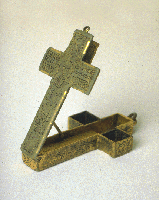 Now that you have learnt the history of ancient Astronomy, I think it is always good for you to know the ancient instruments used in Astronomy. With all the tools of modern technology, it is something hard to imagine how people performed simple functions such as telling the time or knowing where they were on the Earth before the great invention of the clock, maps, or navigational satellites. In ancient times, the only tools available were those provided by the nature.
Now that you have learnt the history of ancient Astronomy, I think it is always good for you to know the ancient instruments used in Astronomy. With all the tools of modern technology, it is something hard to imagine how people performed simple functions such as telling the time or knowing where they were on the Earth before the great invention of the clock, maps, or navigational satellites. In ancient times, the only tools available were those provided by the nature. The astronomical facts of the relatively regular interval of the day, the constancy of the movements of the fixed stars, and the assumption of certain theories, such as a spherical Earth, allowed people to measure their lives. By calculating the height of the Sun or certain stars, the ancient Greek began to understand the shape and size of the Earth. In this way, they were able to determine their latitude. By plotting coordinates against a globe, they could fix their position on the Earth's surface. In addition, by setting up carefully measured markers, or gnomons, they could begin to calculate the time of the day.
* Interesting facts......!
- Measuring the size of the Earth
About 230 BC, Eratosthenes (c. 270 - 190 BC) estimated the size of the Earth by using the Sun. But how......? He discovered that the Sun was directly above his head at Syene in Upper Eypt at noon on the summer solstice. In Alexandra, directly north, the Sun was actually about 7 degrees from its highest point (the zenith) at the summer solstice. Since Eratosthenes knew that the Earth was spherical (360 degrees in circumference), the distance between the two towns should be 7/360 ths of the Earth's circumference.
- Ancient Sundial
Very early on, people realized that they could keep time by the Sun. Simple sundials like this allowed traveller or merchant to know the local time for several different towns during a journey. The altitude of the Sun was measured through the sight holes in the bow and stern of the "little ship". When the cursor on the ship's mast was set to the correct latitude, the plump bob would fall on the proper time.
- How a sundial works?
As the Sun travels across the sky, the shadow which it casts changes in direction and length. A sundial works by setting a gnomon, or "indicator", so that the shadow which the Sun casts at noon falls due north/south along a meridian. (A meridian is an imaginary line running from pole to pole and another for it is a line of longitude.)
The hours can then be divided before and after the noon mark. Hence, the terms "a.m." and "p.m." for morning and night actually originated from the Latin words meaning before and after the Sun passes the north/south meridian. So "a.m." actually refers to "ante meridiem" and "p.m." refers to "post meridiem"!
- Cruciform sundial
 Travelling Christian pilgrims often worried that any ornament might be considered a symbol of vanity. They solved this problem by incorporating religious symbolism into their sundials. This dial, which is shaped in the form of a cross, provided the means for telling the time in a number of English and French towns.
Travelling Christian pilgrims often worried that any ornament might be considered a symbol of vanity. They solved this problem by incorporating religious symbolism into their sundials. This dial, which is shaped in the form of a cross, provided the means for telling the time in a number of English and French towns.- Celestial Globe
The celestial globe records the figures and stars of all the constellations against a grid of lines representing longitude and latitude. During the 17th and 18th centuries, all ships of the Dutch East India Company (E.I.C) were given a matching pair of globes - terrestial and celestial. Calculations could be made by comparing the coordinates on the two different globes. In practice, however, most navigators seemed to be using flat sea-charts to plot their journeys instead of celestial globes.
- Backstaff
The backstaff allowed a navigator to measure the height of the Sun without having to stare directly at it. The navigator held the instrument so that the shadow cast by the shadow vane would fall directly on to the horizon vane. Moving the sight vane, the navigator lined it up so he could see the horizon through the sight vane and the horizon vane. By adding together the angles of the sight and shadow vanes, the navigator could calculate the altitude of the Sun, from which he could determine the precise latitude of his ship.
Image source:






0 comments:
Post a Comment